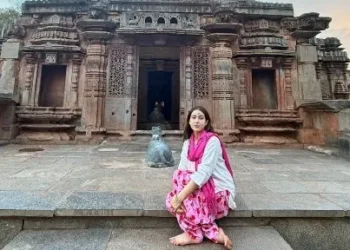Stakeholders estimate that as much as 90 percent of restaurants in India are operated on a lease basis. Of this, 20 percent of organized restaurants are located within malls, while the remaining outlets are in commercial hubs, high streets, and Central Business Districts (CBDs).
It won’t be an exaggeration to say that COVID-19 had sucked the joy out of our lives in more ways than one. The little things we took for granted before the pandemic are now being seen as a luxury. The nightclubs in Chennai which are hubs for both youngsters and those who are young at heart were shut down for four months, following the onslaught of the second wave.
Having opened their doors to the public after this unfortunate hiatus, the watering holes of the city are welcoming guests, with precautions like masking and distancing in place, and with hopes that it will be business as usual soon.
And there are ample reasons for the heightened expectations among bartenders, pub managers, and DJs in the city. The hospitality sector, specifically, the F&B or the food and beverage sector has been among the worst-hit during the pandemic.
Although the local administration recognized the need for restaurants to remain open, considering food delivery is an essential service, pubs and nightclubs drew the shortest straw as allowing people to socialize was the last thing on the minds of the public health officials, considering that close contact in tightly-packed spaces was the number one reason for the spread of the dreaded virus.
That is also the risk that owners of nightclubs run when they open the joints to revelers. For starters, the nature of engagement in nightclubs invites patrons to let their guard down and engage with both friends, and at times strangers in close proximity.
To top it off, these are environments where the music is played at a deafening volume, which compels guests to speak at the top of their voices. All that double masking and sanitizing takes a beating when a group shouts its orders over the volume of music, the perfect recipe for the dispersion of aerosols. And let’s not even get started on the concept of smoking rooms/areas.
Interestingly, one would be hard-pressed to find a nightclub in Chennai that has mandated a policy that requires visitors to be doubly vaccinated. This seems strange when one considers that public health officials in cities like Mumbai, which was among the hardest hit by the COVID waves, have now made it compulsory for those visiting malls to carry their double vaccination certificates.
Internationally, in tourist hotspots such as Paris, pubs are permitting only those patrons who carry a valid health passport with them. It’s a QR code or certificate that proves that the holder has either recently recovered from COVID, or has been fully vaccinated, or has had a negative COVID-19 test in the last 48 hours.
Back in July, the Netherlands attempted to reopen its clubs but rapidly opted for a U-turn and shut them down again as infection rates shot up. Its government said most of the new infections were reported in nightlife settings and parties attended by large numbers of people.
Here in India, the flip side of enforcing rules involving vaccination certificates is that the patronage in pubs, which has already been restricted to 50 percent, might narrow down to a trickle. And the F&B industry cannot afford such a loss at this point in time, especially after what it had undergone the year before.
Stakeholders estimate that as much as 90 percent of restaurants in India are operated on a lease basis. Of this, 20 percent of organized restaurants are located within malls, while the remaining outlets are in commercial hubs, high streets, and Central Business Districts (CBDs).
These outlets cough up anywhere between 15 to 30 percent of their earnings towards rentals. Some joints shell out an additional 5-6 percent of Common Area Maintenance (CAM) if located in malls.
Apart from the lease cost, which happens to take up the lion’s share of fixed costs, there are also expenses of energy consumption and payroll, that add up to 20-25 percent of overall costs. As far as the management of such outlets is concerned, getting the party started is a do-or-die mission























